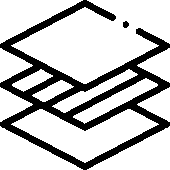Laser Cut Mylar Service
Trusted by
1,000’s
of Satisfied Customers
30+
Years in Business
Mylar is the DuPont brand name for a high-performance polyester film made from stretched polyethylene terephthalate (PET). Developed in the 1950s through advances in polymer chemistry, Mylar was first commercialized for applications requiring exceptional dimensional stability, strength, and chemical resistance. Mylar components made using laser cutting technology result in precision components that have consistent thickness, low moisture absorption, and resistance to tearing making it ideal for parts requiring extremely tight tolerance and pristine edge quality. Whether used in electronics, aerospace, or medical devices, its stability under laser cutting ensures clean, accurate features with minimal material distortion which is required for high-specification components. For more in-depth information about Mylar, we have provided 5 questions and answers below.
Controlling Tolerance
What are the tightest tolerances your laser cutting process can maintain when cutting Mylar?
If you’ve ever tried cutting something as thin and flexible as Mylar with scissors, it moves, it bends, and precision goes right out the window. That’s where laser cutting changes the game. With a finely focused beam, we’re not physically pushing or pulling the material, so there’s no warping or stretching. Instead, the laser’s energy slices through exactly where we tell it to, down to about +/- 1 mil (that’s 25 microns) using a UV laser. Think of it this way: if you lined up about 25 human hairs side by side, our laser cutting tolerance would let you hit a specific one. That’s the level of precision we can hold with Mylar even on delicate, intricate geometries and it’s why lasers are the go-to tool when accuracy isn’t just important, it’s everything. Of course, thicker sheets of Mylar greater than 10 mils thick will get a slightly looser tolerance.

Technology Vs Technology
How does laser cutting technology compare to die-cutting, waterjet, or CNC machining of Mylar?
Imagine you’ve got a sheet of Mylar in front of you — thin, flexible, and just waiting to be turned into something precise. Now, you’ve got four different cutting methods to choose from such as:
| Cutting Method | Key Benefit | Key Disadvantage | Tolerance |
|---|---|---|---|
| Laser Cutting | Non-contact process, seals edges as it cuts. High edge quality and Accuracy. | May not be suitable for all materials. | +/- 1 mil |
| Die-Cutting | Very fast for repeated shapes. | Requires custom dies, potential for rough edges, and dies wear out. | +/- 3-5 mils |
| Waterjet Cutting | Best at cutting very thick materials. | Water can distort or swell thin materials like Mylar. | Not Ideal for Mylar |
| CNC Cutting | Extremely high precision on rigid materials. | The tool can tear or distort flexible Mylar. | Not practical for Mylar |
Edge Quality Factor
What edge quality can be expected when laser cutting Mylar and are burrs or heat-affected zones (HAZ) present?
Laser cutting Mylar is precision controlled on a microscopic scale. The cut is smooth, crisp, and sealed, so you don’t get fuzzy edges or fraying that can happen with mechanical tools. Instead of burrs (which come from metal shavings or torn fibers), you get a clean line where the laser’s energy has neatly parted the material.
As for HAZ ( heat-affected zones), Mylar can melt quickly if the laser parameters are not correct. With the right laser settings, the heat is so localized and minimal that the surrounding area stays untouched. When dialed in correctly, the “HAZ” is virtually invisible with no discoloration, no warping, and no compromise to the material’s performance.


Material Characteristics
How do material characteristics like reflectivity, softness, or thermal conductivity affect edge quality and tolerance control in Mylar?
First, on reflectivity of Mylar, it isn’t shiny in the wavelength’s lasers use (like metals are), so the beam’s energy goes straight into cutting instead of bouncing around. That means no “laser glare” to fight with, and you get a more predictable, repeatable cut.
Regarding softness, Mylar is flexible, which is great for rolling into tubes or folding, but it means you must keep it perfectly still while cutting. Even the tiniest shift can throw off tolerances, so we use vacuum tables to hold it in place during the manufacturing process.
Finally, thermal conductivity or in Mylar’s case, the lack of it. It doesn’t spread heat well, which has its pros and cons. The laser’s heat stays concentrated right where it’s cutting (great for sharp, narrow kerfs), but it also means you must be careful not to overheat the edges. Too much heat in one spot and you can get a tiny melt bead. The trick is balancing laser parameters such as speed, power, frequency, laser passes and others, so the edge is clean, smooth, and dimensionally accurate.
The Benefits of Laser Cut Mylar
What Are the Benefits to Laser Cutting Mylar?
Mylar can be made into precision components for amazing applications, but only if you handle it just right. Laser cutting machines are the perfect platform to produce these precision components. Because the laser never actually touches the material, there’s no tugging, stretching, or denting just a clean, contactless cut exactly where you want it. That means you can create incredibly fine details and tight tolerances of +/- 1 mil without worrying about mechanical wear or distortion. The beam also seals the cut edge as it goes, so you don’t get fraying or loose fibers, which is a big deal for applications like electronics insulation or precision gaskets.
And there is another bonus to using laser cutting-there’s no tooling to build, maintain, or replace. You can go from a digital design to a finished part in a short time, whether it’s a one-off prototype or a production run. Laser cutting treats Mylar with the finesse it needs, while delivering the speed, accuracy, and edge quality that precision manufacturing lives on.

Conclusion
Mylar and laser technology are natural pairings offering dimensional stability and durability, the other delivering unmatched accuracy and edge quality. By harnessing a finely controlled laser beam, manufacturers can consistently hold tight tolerances while producing edges that are smooth and free from defects. This combination not only preserves the integrity of delicate designs but also enables complex geometries that would be difficult or impossible with mechanical methods. For industries where every micron matters, laser-cut Mylar stands as a benchmark for high-quality and high-precision fabrication.
